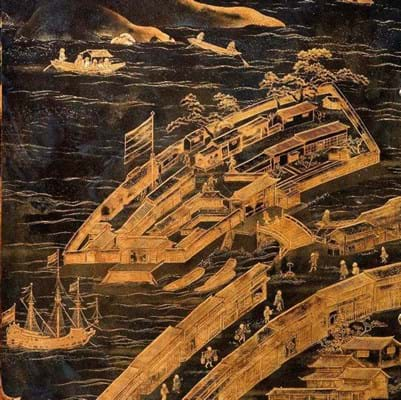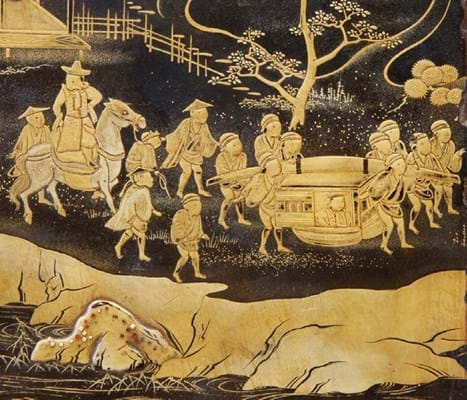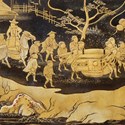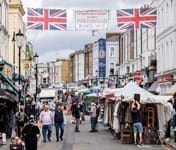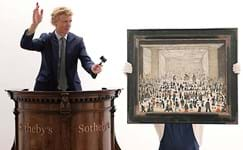
It was probably made at great expense for a high-ranking member of the Dutch East India Company (Vereenigde Oostindische Compagnie) c.1680 – its subject matter chosen to tell the story of a unique trading relationship.
After the expulsion of the Portuguese in 1639, the VOC were the only Europeans permitted to trade in Japan. However, restrictions on numbers and movement were very tight.
As detailed in the gold, silver, brown and red hiramaki-e to the sides and doors of this cabinet, the primary Dutch trading post was the artificial fan-shaped island of Dejima. It was just 185m long, no more than 20 Dutch people (none of them soldiers or women) could live there at any one time and the annual rent was around £150,000.
Merchants were only allowed to leave the island– taking the single bridge – by special permission, while the opperhoofd (chief trader) was required to make an annual procession to the capital Edo to pay tribute to the Shogun. The travelling Dutchmen are all easily recognisable here as they wear Western outfits and wide-brimmed hats, the opperhoofd shown riding in a palanquin.
Japanese lacquer was a luxury commodity that became even more sought-after when Japan restricted relations with the rest of the world.
The shape of this cabinet, which measures 3ft 4in (1m) across, is adapted from earlier Portuguese and Spanish escritórios or bargueños with the doors, fixed with engraved metal clasps and lock plates, concealing drawers of various sizes. A similar pair showing Dejima and the merchants’ procession forms part of the Dutch Royal Collections. They were possibly a gift to Amalia van Solms (1602-75), an avid Japanese art collector and lover of lacquerwares.
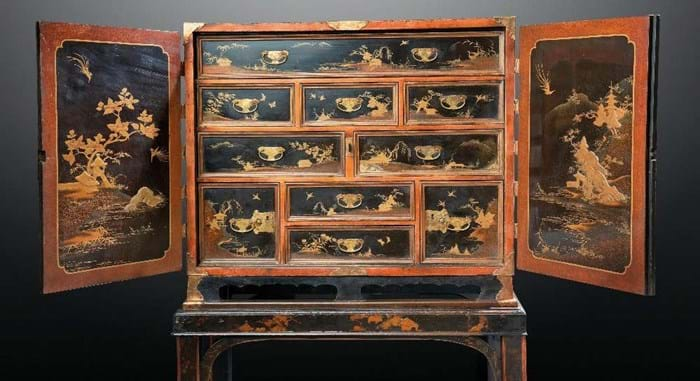
The internal drawers are decorated with more conventional Japanese lacquer scenes of birds, flowers, buildings and mountainous river landscapes.
The cabinet offered for sale as part of the Japanese works of art auction at Woolley & Wallis on November 23 was also probably a special commission for Dutch nobility or an official serving in the Dutch East Indies.
It had been in a Norfolk private collection since the 1950s and was understood to have been purchased as part of the contents of Herne Close, Cromer, the home of Margaret Jane Barclay (1861-1958). Her ancestor was James Barclay (1708-66) who established the Barclays banking dynasty, although it is likely that the cabinet and its later European stand was purchased by Joseph Gurney Barclay (1816-98), who built and furnished Herne Close as a holiday home.
It attracted half a dozen parties including an internet bidder up to around £90,000 and the two phones that took it to £105,000 (or £131,250 including 25% buyer’s premium). There had been interest from a UK institution but the winning bidder was an international dealer.


